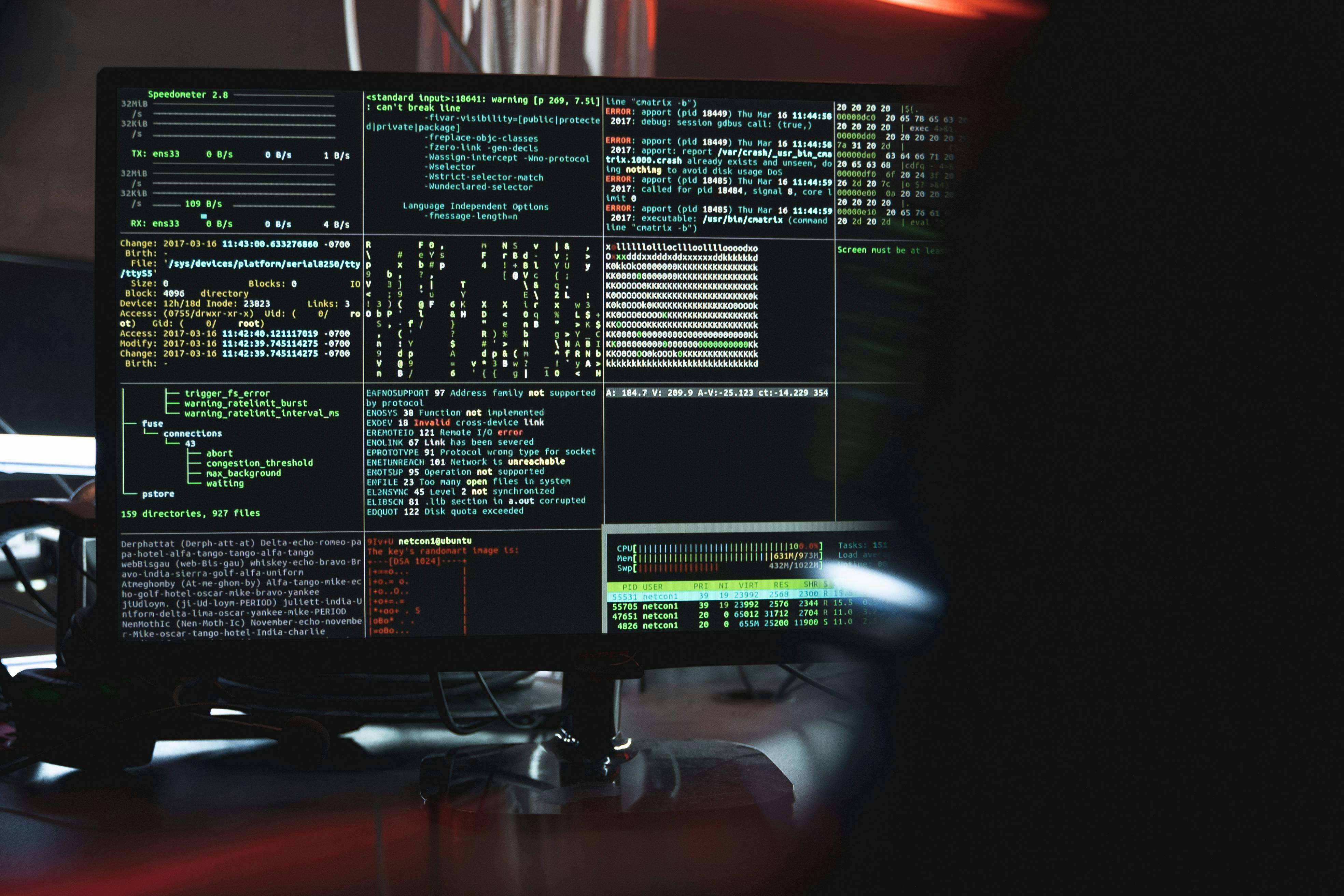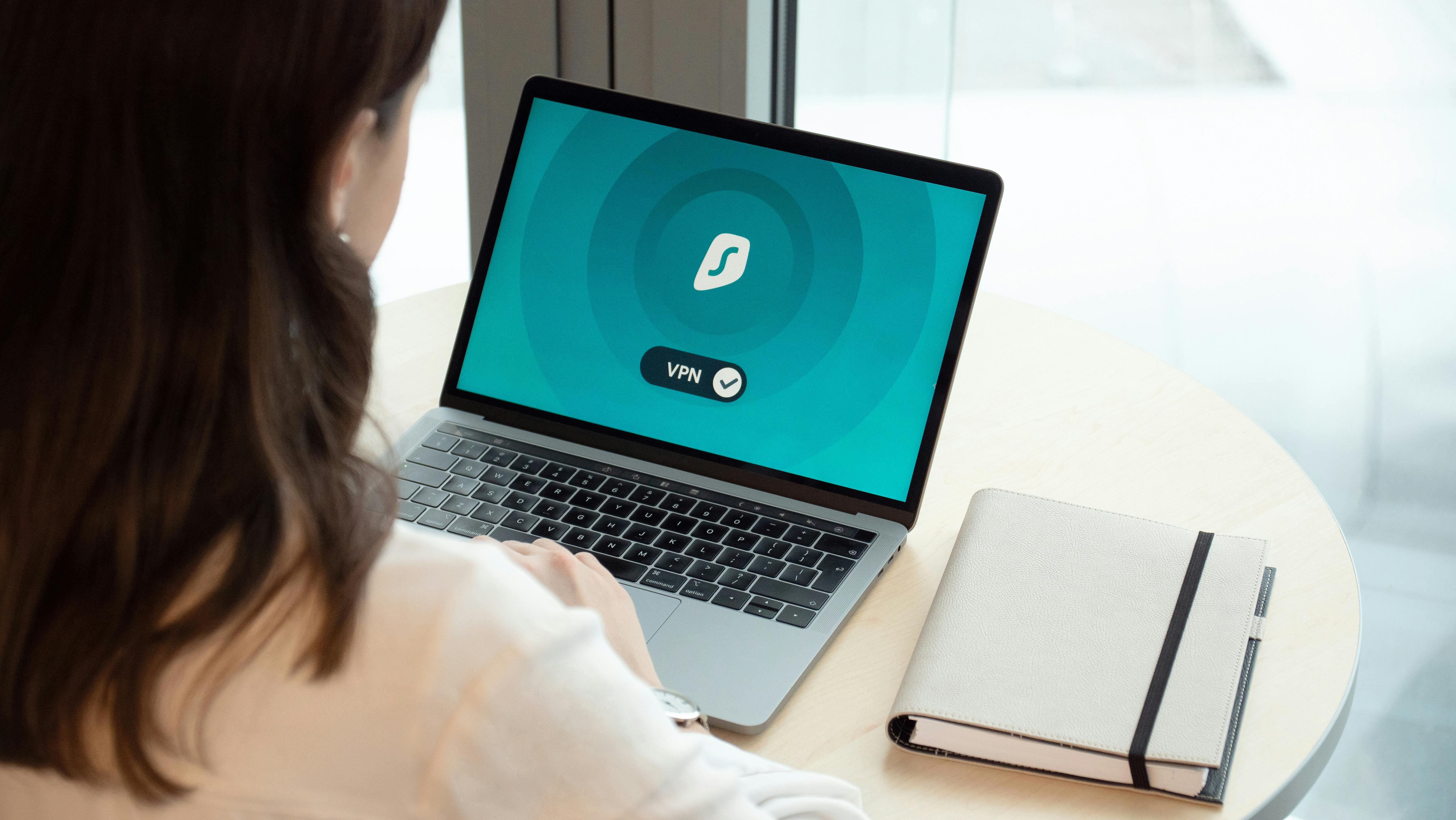Understanding the Threat Landscape
In today’s digital age, it is crucial to be aware of the various threats that exist in cyberspace. Understanding the threat landscape can help you better protect yourself and prevent hacking attempts and cyberattacks.
Types of Hackers
Hackers come in different forms, each with their own motives and skills. Some hackers are known as white hat hackers, who use their technical expertise to help identify vulnerabilities and secure systems. On the other hand, black hat hackers engage in malicious activities, exploiting weaknesses for personal gain.
Common Cyberattack Methods
Cybercriminals employ a wide range of tactics to breach systems and steal valuable data. From phishing scams and malware attacks to brute-force and denial-of-service (DoS) attacks, it’s essential to be aware of these methods. Keeping your software and devices updated and using strong and unique passwords can significantly deter hackers.
Motivations Behind Cyberattacks
Understanding the motivations behind cyberattacks can shed light on their intentions. Some attacks are financially motivated, aiming to steal valuable information for monetary gain. Others may be politically motivated, targeting government entities or individuals to gain sensitive information for intelligence purposes. Cyberattacks can also be carried out with the intent to cause disruption or damage to businesses or individuals.
Being aware of the threat landscape, the different types of hackers, common cyberattack methods, and their motivations can greatly enhance your ability to prevent hacking and defend against cyberattacks. Stay vigilant and take proactive measures to protect yourself in this ever-evolving digital world.

This image is property of images.pexels.com.
## Securing Your Network
In today’s digital age, cybersecurity is of utmost importance in order to protect your personal and sensitive information. One of the key aspects of safeguarding your network is by implementing strong firewalls. Firewalls act as a barrier between your internal network and the vast world of the internet, controlling the incoming and outgoing traffic and preventing unauthorized access.
Implementing Strong Firewalls
To ensure robust protection, make sure your firewall is properly configured with the latest security updates. Additionally, consider using next-generation firewalls that provide advanced features such as intrusion prevention and deep packet inspection. These capabilities can detect and block malicious traffic, offering enhanced defense against cyberattacks.
Using Intrusion Detection Systems
Another effective measure to safeguard your network is by utilizing intrusion detection systems (IDS). IDS monitor network traffic for suspicious activities and can alert you of any intrusion attempts. By analyzing the network traffic patterns and identifying potential threats in real-time, IDS enable proactive defense against cyberattacks.
Securing Wi-Fi Networks
It’s crucial to secure your Wi-Fi networks to prevent unauthorized access and potential hacking. Start by setting a strong and unique password for your Wi-Fi router. Additionally, enable network encryption such as WPA2-PSK and disable SSID broadcasting to make it harder for hackers to identify and breach your network.
By implementing these measures, you can significantly reduce the risk of hacking and defend against cyberattacks effectively. Always stay vigilant and ensure your network security is up to date to stay one step ahead of potential threats.
Protecting Your Devices
One of the most important steps you can take to prevent hacking and defend against cyberattacks is to protect your devices. This includes keeping your software up to date, using strong passwords, and enabling two-factor authentication.
Keeping Software Up to Date
Regularly updating your software is essential in preventing hackers from exploiting known vulnerabilities. System updates not only provide improved features but also include vital security patches. Therefore, make sure to enable automatic updates on your devices. Additionally, it is crucial to keep all your applications, including antivirus software and web browsers, up to date to ensure maximum protection.
Using Strong Passwords
Creating strong and unique passwords is essential for safeguarding your accounts. Be sure to use a combination of uppercase and lowercase letters, numbers, and special characters. Avoid using easily guessable passwords such as common phrases or personal information. It is also crucial to use a different password for each account to minimize the risk of multiple accounts being compromised if one password is stolen.
Enabling Two-Factor Authentication
Two-factor authentication adds an extra layer of security to your accounts by requiring a second form of verification, typically a unique code sent to your mobile device, in addition to entering your password. This significantly reduces the risk of unauthorized access, even if your password is compromised. Whenever possible, enable two-factor authentication on your accounts, especially those containing sensitive information.
By implementing these preventive measures and staying vigilant, you can greatly reduce the chances of falling victim to hacking and cyberattacks. Remember, your device’s security is in your hands!

This image is property of images.pexels.com.
## Securing Physical Access
In order to effectively prevent hacking and defend against cyberattacks, it’s crucial to secure physical access to your sensitive areas and devices. By implementing the following measures, you can significantly minimize the risk of unauthorized individuals gaining physical access to your infrastructure.
Restricting Access to Sensitive Areas
One of the first steps in securing physical access is to implement access control systems that limit entry to only authorized personnel. This can be achieved through the use of swipe cards, keypads, or biometric identification methods. Additionally, it’s important to establish clear policies regarding who is allowed to access specific areas and regularly review and update those access permissions.
Securing Physical Devices
Ensure that all physical devices such as servers, switches, and routers are kept in a secure location, ideally a locked server room or cabinet. Additionally, consider implementing secure mounting techniques to prevent tampering or theft. It’s important to regularly monitor the physical condition of these devices and promptly address any signs of physical compromise.
Monitoring and Surveillance
Installing surveillance cameras and alarms in areas where sensitive equipment is stored can provide an additional layer of protection. Regularly monitor the footage and promptly investigate any suspicious activities. Implementing an intrusion detection system can also help in capturing and alerting you to any potential threats.
By focusing on securing physical access, you can strengthen your overall cybersecurity defenses and reduce the risk of hacking and cyberattacks. Remember, maintaining a proactive and vigilant approach is key to staying one step ahead of potential threats.

This image is property of images.pexels.com.
## Educating Your Team
In today’s digital age, cybersecurity threats are becoming increasingly sophisticated, making it essential to effectively educate your team on how to prevent hacking and defend against cyberattacks. By equipping your employees with the necessary knowledge and skills, you can significantly enhance your organization’s security posture.
Training Employees on Cybersecurity Best Practices
Start by conducting regular training sessions that cover cybersecurity best practices. Teach your team about the importance of creating strong, unique passwords and encourage them to use a password manager. Train them on recognizing and avoiding suspicious emails, links, and attachments. Emphasize the significance of keeping software and systems up to date, as well as the potential risks of using public Wi-Fi networks. By doing so, you will empower your employees to make informed decisions and take the necessary precautions to protect sensitive data.
Raising Awareness about Social Engineering
Educate your team about the tactics employed by hackers through social engineering. Make them aware of the various forms of social engineering attacks, such as phishing, baiting, and pretexting. Provide real-life examples and practical tips on how to identify and avoid falling victim to such scams. Encourage open communication and create a culture where employees feel comfortable reporting suspicious activities or concerns.
Implementing Phishing Awareness Programs
Since phishing remains one of the leading attack vectors, implementing phishing awareness programs can prove invaluable in reinforcing security practices. Conduct simulated phishing campaigns and provide immediate feedback to employees based on their responses. Offer continuous education and resources to help employees spot phishing attempts effectively. Regularly communicate recent phishing trends, warning signs, and precautionary measures to keep your team informed and prepared.
By prioritizing the education of your team, you can reduce the likelihood of successful cyberattacks and create a robust defense against hackers. Stay proactive in providing ongoing training, raise awareness about social engineering tactics, and implement phishing awareness programs to bolster your organization’s cybersecurity efforts.
Implementing a Cybersecurity Culture
In today’s digital age, protecting your sensitive information and defending against cyberattacks is of utmost importance. Hackers are constantly devising new ways to infiltrate systems and steal data, making it essential for individuals and organizations alike to establish a strong cybersecurity culture. By implementing robust security measures and fostering a sense of responsibility among employees or users, you can significantly reduce the risk of being hacked.
Creating a Strong Security Policy
Start by developing a comprehensive security policy that outlines guidelines and best practices for safeguarding information. This policy should cover areas such as password management, data encryption, network access controls, and acceptable use of company resources. Ensure that all employees or users are made aware of this policy and regularly train them on cybersecurity best practices.
Regularly Updating and Testing Security Measures
Cybersecurity threats are constantly evolving, so it’s crucial to keep your security measures up to date. Regularly install software updates and patches to address any vulnerabilities in your systems. Additionally, conduct regular penetration tests and vulnerability assessments to identify and address any weaknesses in your networks or applications.
Encouraging Reporting of Security Incidents
Create an environment where employees or users feel comfortable reporting any potential security incidents. Establish a clear communication channel and educate individuals on the importance of promptly reporting any suspicious activities or breaches. This enables swift action to be taken to mitigate the impact of an attack and prevent further compromise of your systems.
By implementing a solid cybersecurity culture through the creation of a strong security policy, regular updating and testing of security measures, and encouraging the reporting of security incidents, you are taking proactive steps to prevent hacking and defend against cyberattacks. Stay vigilant, educate yourself and your team, and make security a top priority to safeguard your valuable data.
Developing an Incident Response Plan
Creating an Incident Response Team
One crucial step to preventing hacking and defending against cyberattacks is to establish an Incident Response (IR) team. This team should comprise individuals with expertise in various areas, including cybersecurity, IT, legal, and communications. Assigning specific roles and responsibilities to each team member will ensure a coordinated and efficient response to any cyber incident that may occur.
Identifying and Analyzing Incident Types
To effectively prevent hacking, it is essential to identify and analyze the different types of cyber incidents that could potentially occur. This includes familiarizing yourself with common attack vectors, such as phishing, malware, or network intrusions. By understanding the tactics used by hackers, you can implement proactive measures to mitigate risks and protect your digital assets.
Defining Incident Response Procedures
Developing a well-defined set of incident response procedures is vital in securing your systems and defending against cyberattacks. These procedures should specify the steps to be taken in the event of a breach, including communication protocols, notifications to relevant stakeholders, evidence collection, containment, eradication, and recovery. Regularly reviewing and updating these procedures to address emerging threats is crucial in maintaining a robust defense posture.
Creating an incident response plan, establishing a response team, and defining procedures to address various incident types will empower you to proactively prevent hacking and effectively defend against cyberattacks. By integrating these practices into your cybersecurity strategy, you can better protect your organization’s sensitive data and minimize the impact of potential threats.
Backing Up Data
Regularly Backing Up Critical Data
One of the most important steps in preventing hacking and defending against cyberattacks is to regularly back up your critical data. By creating routine backups of your important files and information, you can ensure that even if your system is compromised, you won’t lose vital data. Establish a set schedule for backing up your data, whether it’s daily, weekly, or monthly, depending on the volume of data and the frequency of updates.
Implementing Offsite and Cloud Backup Solutions
In addition to regular backups, it is highly recommended to implement offsite and cloud backup solutions. Offsite backups involve storing your data at a different physical location, providing an extra layer of protection in case of theft, fire, or other disasters. Cloud backup solutions, on the other hand, offer the convenience of automatically backing up your data to remote servers via the internet. These solutions offer enhanced security measures to protect your data from unauthorized access.
Testing Data Restoration Processes
Lastly, it’s vital to regularly test the restoration processes of your backed-up data. This step ensures that your backups are functioning correctly and can be reliably restored in the event of a cyberattack or system failure. Regular testing will help identify any issues or errors in the backup process and allow you to address them promptly. Remember to document and update the restoration procedures as needed to ensure a smooth and efficient recovery process.
By implementing these data backup strategies, you significantly reduce the risk of losing valuable information and better protect yourself against cyberthreats.
Monitoring and Detection
Ensuring the security of your digital environment is crucial in safeguarding your data and preventing hacking and cyberattacks. Monitoring and detection tactics play a vital role in maintaining a robust defense system.
Implementing Security Information and Event Management (SIEM)
One effective way to prevent hacking is by implementing Security Information and Event Management (SIEM) technology. SIEM provides comprehensive visibility and real-time analysis of security events across your network. It helps detect potential threats by consolidating and analyzing data from various sources, including firewalls, intrusion detection systems, and antivirus software. With SIEM in place, you can proactively monitor your system for any suspicious activities and respond swiftly to mitigate risks.
Performing Regular Vulnerability Assessments
Regular vulnerability assessments are essential to identify weaknesses in your network and applications. By conducting thorough assessments, you can pinpoint potential entry points for hackers and promptly address them. Implementing a robust vulnerability management program helps ensure that all systems and software are up to date with the latest security patches, minimizing the chances of exploitation.
Monitoring User Behavior and Network Traffic
User behavior monitoring and network traffic analysis provide insights into any abnormal activities within your network. By keeping an eye on user behavior, such as access patterns and data manipulation, you can identify potential insider threats or compromised accounts. Additionally, monitoring network traffic allows you to detect any unauthorized access attempts or suspicious data transfers. By promptly investigating and responding to such anomalies, you can prevent potential hacking incidents and safeguard your sensitive information.
Remember, a proactive approach to monitoring and detection is paramount in preventing hacking and defending against cyberattacks. By implementing SIEM technology, conducting regular vulnerability assessments, and monitoring user behavior and network traffic, you can strengthen your defense mechanisms and stay one step ahead of potential threats.
Staying Informed and Updated
In today’s digital world, staying informed and updated about cybersecurity is crucial to prevent hacking and defend against cyberattacks. By keeping yourself well-informed, you can stay one step ahead of potential threats and take necessary precautions to protect your digital assets.
Keeping Up with the Latest Cybersecurity News
To stay informed about the ever-evolving world of cybersecurity, make it a habit to regularly read news articles, blogs, and research papers related to this field. Subscribing to reputable cybersecurity newsletters or following industry experts on social media platforms can also provide you with valuable insights and timely updates on emerging threats, vulnerabilities, and preventive measures.
Following Security Best Practices
Implementing proper security best practices is another key step in defending against cyberattacks. This includes using strong and unique passwords, enabling multi-factor authentication, regularly updating and patching your software and devices, using reliable antivirus software, and being cautious about phishing emails and suspicious links.
Engaging in Industry Information Sharing
Engaging in industry information sharing initiatives, such as participating in cybersecurity forums or joining threat intelligence programs, can greatly enhance your knowledge and awareness of potential risks. Collaborating with others in the industry allows you to learn from their experiences, exchange insights, and collectively develop effective strategies to prevent hacking and protect against cyberattacks.
By staying informed, following best practices, and engaging in information sharing, you can proactively defend yourself against cyber threats and safeguard your digital presence. Remember, knowledge is power when it comes to cybersecurity.
